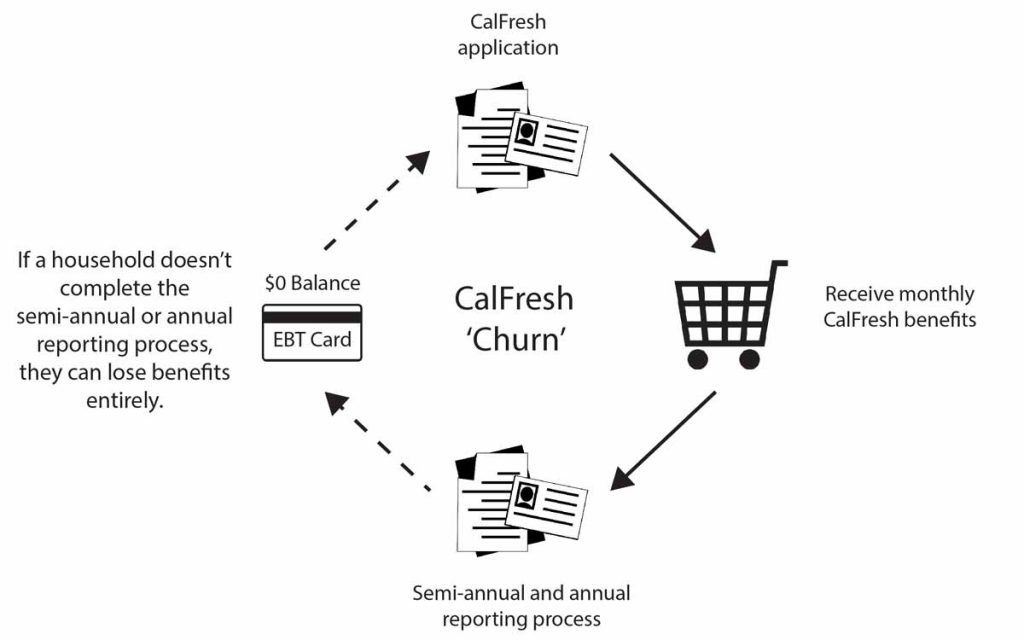CalFresh – known nationally as SNAP and formerly as ‘food stamps’ – is a cornerstone of our food safety net in California. Almost 4.5 million people participate in CalFresh statewide, and more than 60,000[1] people participate in San Francisco and Marin combined. CalFresh participants receive an “EBT card” – which functions like a debit card that gets replenished with CalFresh benefits each month; participants then use CalFresh benefits to buy food in grocery stores and farmers’ markets.
Unfortunately, CalFresh churn is a big problem among many recipients.
Churn is when an eligible recipient unexpectedly loses CalFresh benefits, usually because of missed reporting requirements, only to re-enroll within one to three months.

In order to stay on benefits, CalFresh households must report eligibility information periodically. At six months after initial application, participants must notify the county of any household circumstances that have changed through a form called a SAR 7; at one year, they must re-verify all household information and complete an interview. The idea is that household circumstances sometimes change, and having a regularly scheduled time when participants submit documents and verifications ensures their status with CalFresh remains accurate.
But in practice, many households suddenly find themselves with an empty EBT card, unable to buy groceries. Imagine standing at a grocery check-out counter, only to find that your debit card unexpectedly had a $0 balance? What would that mean for feeding your family and paying the rest of your bills that month?
An interruption in CalFresh benefits, even for a month, can have real, damaging consequences for a family that is living on the edge of financial stability. For example, a household with the average CalFresh benefit of $304 per month would lose about 100 meals during the month when benefits are interrupted.
Statewide, one in five Calfresh applications received is from someone who was on CalFresh in the last 90 days.
Why does this happen? Confusion about the semi-annual reporting process, difficult-to-read letters from the county, language barriers, a missed interview, or a recent change in address or phone number can all result in benefits being terminated. It is not difficult to imagine a situation in which a busy family with multiple jobs, hectic schedules of school and childcare, combined with the stress of paying bills and keeping household paperwork in order, could end up missing CalFresh deadlines. Once benefits have been lost, households sometimes have to reapply for benefits all over again.
In addition to hurting recipients, CalFresh churn is inefficient and troublesome for county administrators. Instead of helping new clients enroll or improving the program overall, workers spend valuable time completing new applications for cases which should never have been discontinued in the first place.
We estimate that in San Francisco and Marin, $280,000 in CalFresh money are lost each month due to churn.
Over the next month, the Food Bank Advocacy Team will share a series of blog posts about CalFresh churn. Next week, we will dive into our county-level data in San Francisco and Marin. In subsequent weeks, we will explore more specifically what causes churn, and provide recommendations to diagnose churn and implement effective solutions.
Join us as we explore this topic!
[1] DFA 256 Report, August 2016: http://www.dss.cahwnet.gov/research/PG352.htm
[2] CDSS CalFresh Household Profile, FFY, 2014: http://www.calfresh.ca.gov/PG844.htm


Share